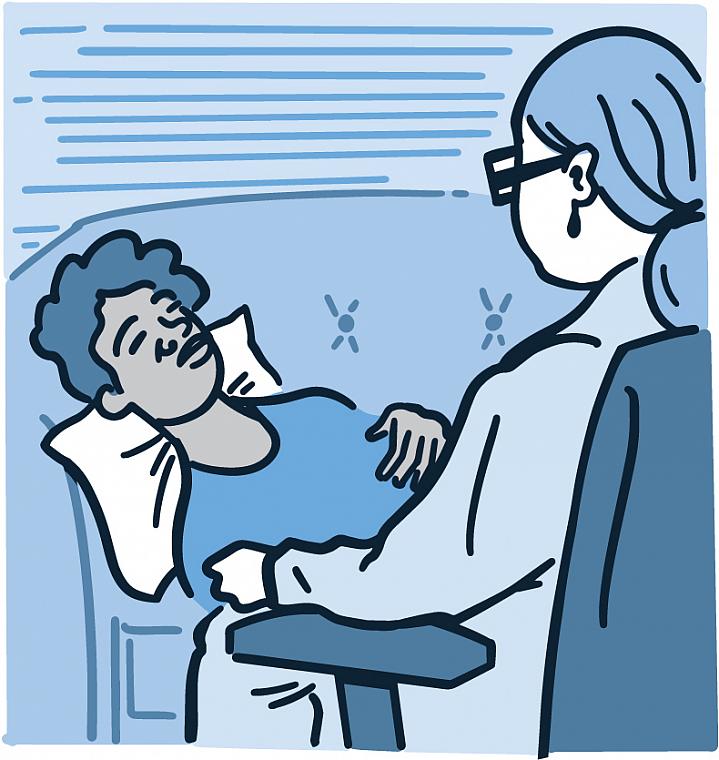Hypnosis for Health
Can Trances Work?

Have you seen someone get hypnotized? They may have been put in a trance and told to do silly things. But hypnosis can be used for more than just show. It’s also being studied to treat certain health conditions.
Medical hypnosis aims to improve health and wellness. It can help relax and focus your mind—and make you more open to new ideas.
The technique usually has two parts. First, the health care provider gets your attention by inviting you to focus on something, such as an object or breathing. When you focus like this, your brain becomes more open to suggestion.
“Focusing makes the brain more flexible,” explains Dr. Mark P. Jensen, a pain expert at the University of Washington who researches hypnosis.
Then the health care provider can offer a helpful suggestion. For example, if your goal is to manage pain, the provider may suggest that you feel greater comfort. Or they may suggest that you focus on being able to handle the pain more easily.
“Hypnosis takes advantage of the fact that people are able to be open to absorbing new ideas,” Jensen says. “You get someone’s attention and then you offer them a new way of looking at a problem that will make the problem easier for them to manage.”
In addition to pain, studies suggest that hypnosis may help manage irritable bowel syndrome and post-traumatic stress disorder. Researchers are also studying hypnosis for mood disorders.
“There’s emerging evidence that it’s useful for helping people to manage depression and anxiety, including anxiety around medical procedures and surgery,” Jensen says.
Some people respond to hypnosis more easily than others. It’s also more effective if you want to be hypnotized. Hypnosis is not mind control by another person.
“We’re all open to new ideas at some level,” he says. “With people who have more hypnotic talent, it just takes fewer sessions. But everybody can respond at some level to hypnosis.”
Imaging studies are shedding light on what happens in the brain during hypnosis. “Hypnosis is a particularly powerful technique for changing brain activity,” Jensen says.
Researchers have found that different hypnotic suggestions can affect different parts of the brain. Pain involves both sensation and emotion.
A hypnotic suggestion for greater comfort changes the brain activity in the areas that process the intensity of the sensations.
“If I make the suggestion that these sensations don’t bother you anymore, then the part of the brain that processes how upset you are by pain decreases in activity,” Jensen says. “But the part of the brain that processes intensity of sensation doesn’t necessarily change.”
The way a drug treats pain is different. If you take an opioid to relieve pain, your whole brain can be affected, including the parts that process sensation. The pain may go away, but there can be side effects. These may include constipation, breathing problems, and even addiction.
More studies are needed to fully evaluate the potential benefits of hypnosis and how it might work. We do know hypnosis doesn’t work for everyone. “There are some people—very few—that it only helps a little,” Jensen says. “There are others whose lives can be completely turned around for the better with hypnotic treatments. Most people are somewhere in between.”
NIH Office of Communications and Public Liaison
Building 31, Room 5B52
Bethesda, MD 20892-2094
nihnewsinhealth@od.nih.gov
Tel: 301-451-8224
Editor: Harrison Wein, Ph.D.
Managing Editor: Tianna Hicklin, Ph.D.
Illustrator: Alan Defibaugh
Attention Editors: Reprint our articles and illustrations in your own publication. Our material is not copyrighted. Please acknowledge NIH News in Health as the source and send us a copy.
For more consumer health news and information, visit health.nih.gov.
For wellness toolkits, visit www.nih.gov/wellnesstoolkits.



